OPPO Find N2 hands-on: This fun-sized foldable is amazing
The Find N2 has a design that's ideal for one-handed use, and the crease is almost non-existent.

Chinese brands are increasingly turning their attention to the foldable segment, and in a move that should worry Samsung, these products are finally starting to make their way outside China. Honor's Magic Vs is slated for a global launch in early 2023, and OPPO is now showcasing its offerings in this area with the introduction of the Find N2 and the Find N2 Flip.
The Find N2 follows in the footsteps of last year's Find N, with OPPO sticking with a familiar form factor. That's not all on offer this time; OPPO showed off the Find N2 Flip as well, and it is particularly interesting because the inward-folding phone goes after the Galaxy Z Flip 4. While most manufacturers have focused on fold-out designs thus far, the Find N2 Flip is one of the first real alternatives to Samsung's Z Flip foldables.

What's intriguing about the device is that OPPO is differentiating the Find N2 Flip by adding a large 3.26-inch cover screen, significantly larger than the 1.9-inch outer screen you get on the Z Flip 4.
The Find N2 Flip will be launching globally in early 2023, signaling OPPO's intention to go after Samsung in this burgeoning segment. I'll have much more to talk about the device as we get closer to launch, but for now, I'm going to focus my attention on the Find N2.
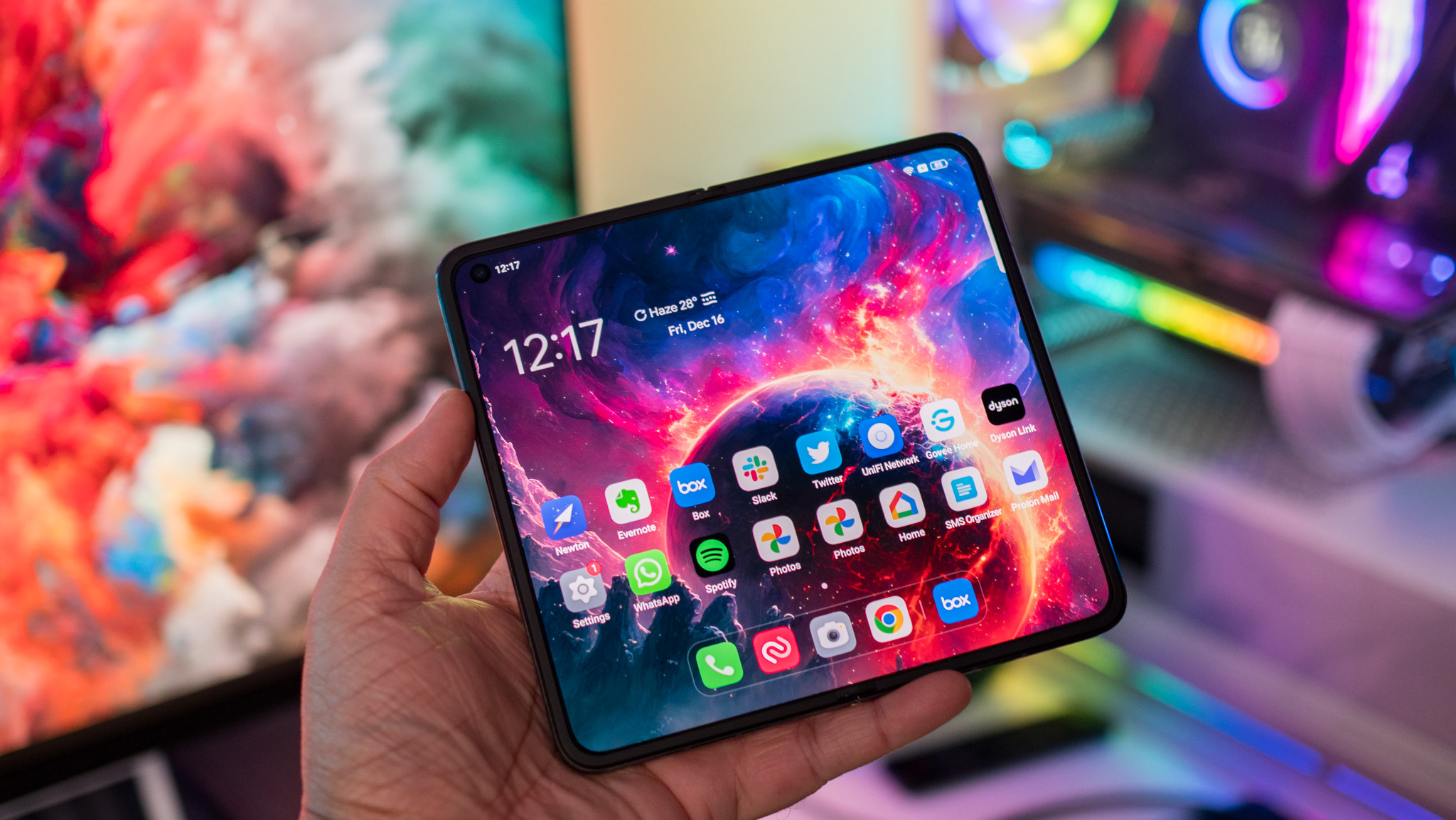
I used the Find N2 for five days, and I'm doing a hands-on instead of a full review as my unit is running a Chinese version of ColorOS 13 and doesn't include the Play Store and other Google services. OPPO says it is still deliberating whether to launch the Find N2 outside China, so for now, there's no telling if the foldable will make its way to global markets.

What's immediately noticeable when using the Find N2 is the heft; coming in at just 233g, this is the lightest phone with a fold-out screen. I didn't use the first-gen Find N last year, but OPPO says it was able to trim a full 42g off the weight with the Find N2, achieved thanks to the new hinge system.
OPPO touts the use of carbon fiber and a "high-strength alloy used in aviation" as being the differentiator with the second-gen Flexion hinge, noting that it reduced the number of components down to 100 — 38 fewer than the first-gen hinge.

That makes a tangible difference in daily use, and it is a delight to use the Find N2. The hinge is wonderfully smooth, and there's barely any crease in the middle of the inner screen — OPPO says the crease is 67% thinner than last year. Even though the hinge is lighter and thinner, FlexForm Mode (similar to Flex Mode on the Z Fold 4) is intact, allowing you to use the foldable in any position between 45 and 125 degrees. You can use the camera in this angle as well, unlocking the possibility of interesting angles.
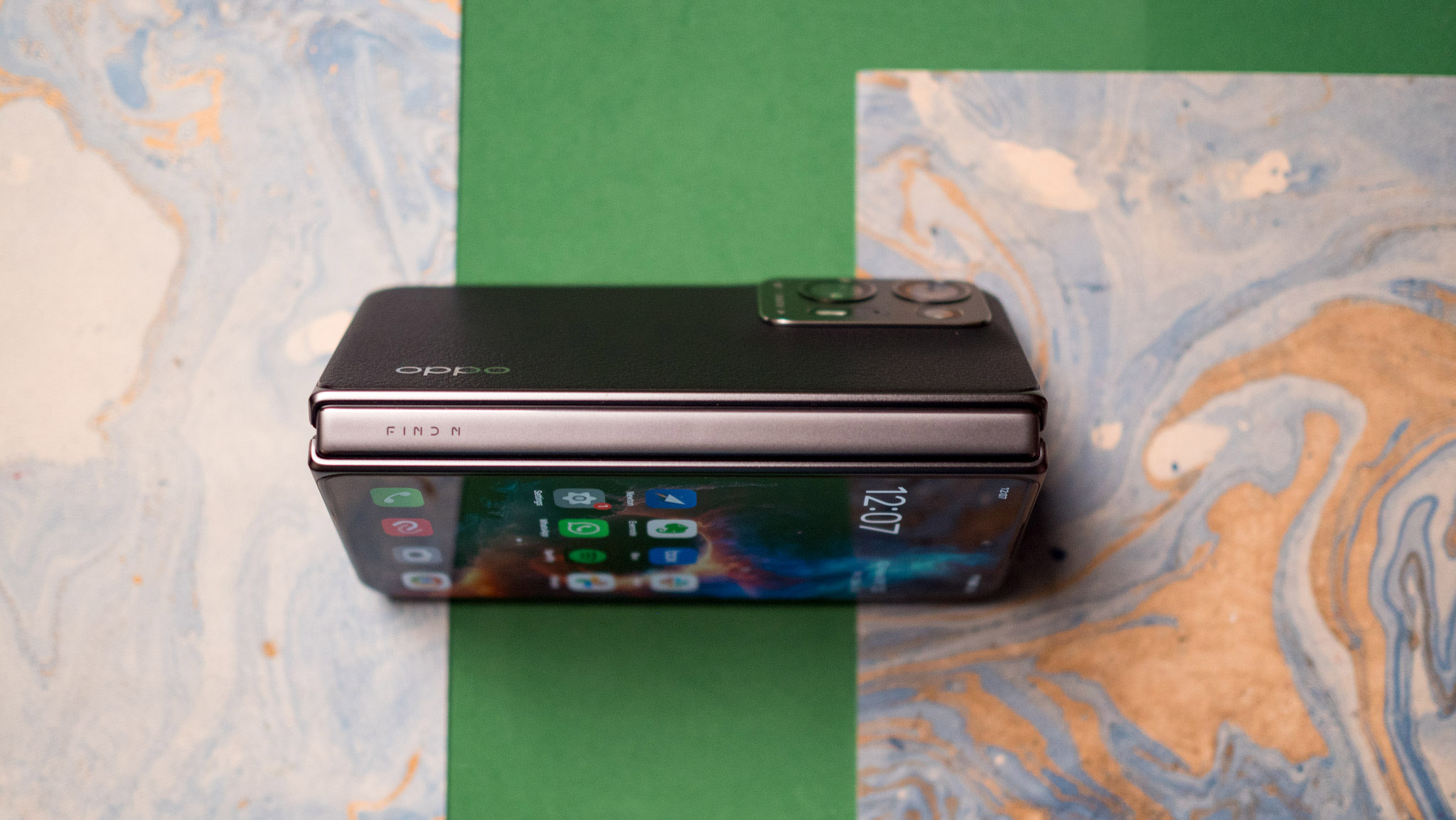
Having used all foldables launched this year, I can say with some confidence that this is my favorite hinge mechanism — it isn't as tight or rigid as the Galaxy Z Fold 4, and the action of the spring-loaded system isn't as intensive as Xiaomi's Mix Fold 2. OPPO found the ideal balance for the hinge, and I can't wait for the same mechanism to show up in the OnePlus Fold.

Another point of differentiation for the Find N2 is the size. While other fold-out designs are large and tall, the Find N2 has a significantly smaller profile that's wonderful for one-handed use — the foldable is a full 2.29mm shorter than the Galaxy Z Fold 4. That said, you're still getting usable screens here; there's a 5.54-inch outer AMOLED screen with an 18:9 ratio and resolution of 2120 x 1080, and the Find N2 folds out to a 7.1-inch AMOLED screen with a 9.8:4 ratio and resolution of 1920 x 1792.
Both screens have 120Hz refresh and excellent color vibrancy, and they get exceedingly bright in outdoors use. Like the best foldables, you'll find a plastic layer covering both screens, but it is razor-thin and doesn't affect usability. The outer screen is covered by a layer of Gorilla Glass Victus, and the glass-backed models have the same coating at the back as well. The inner screen gets LTPO tech and goes all the way down to 1Hz when viewing static content like photos, and there isn't much missing here.





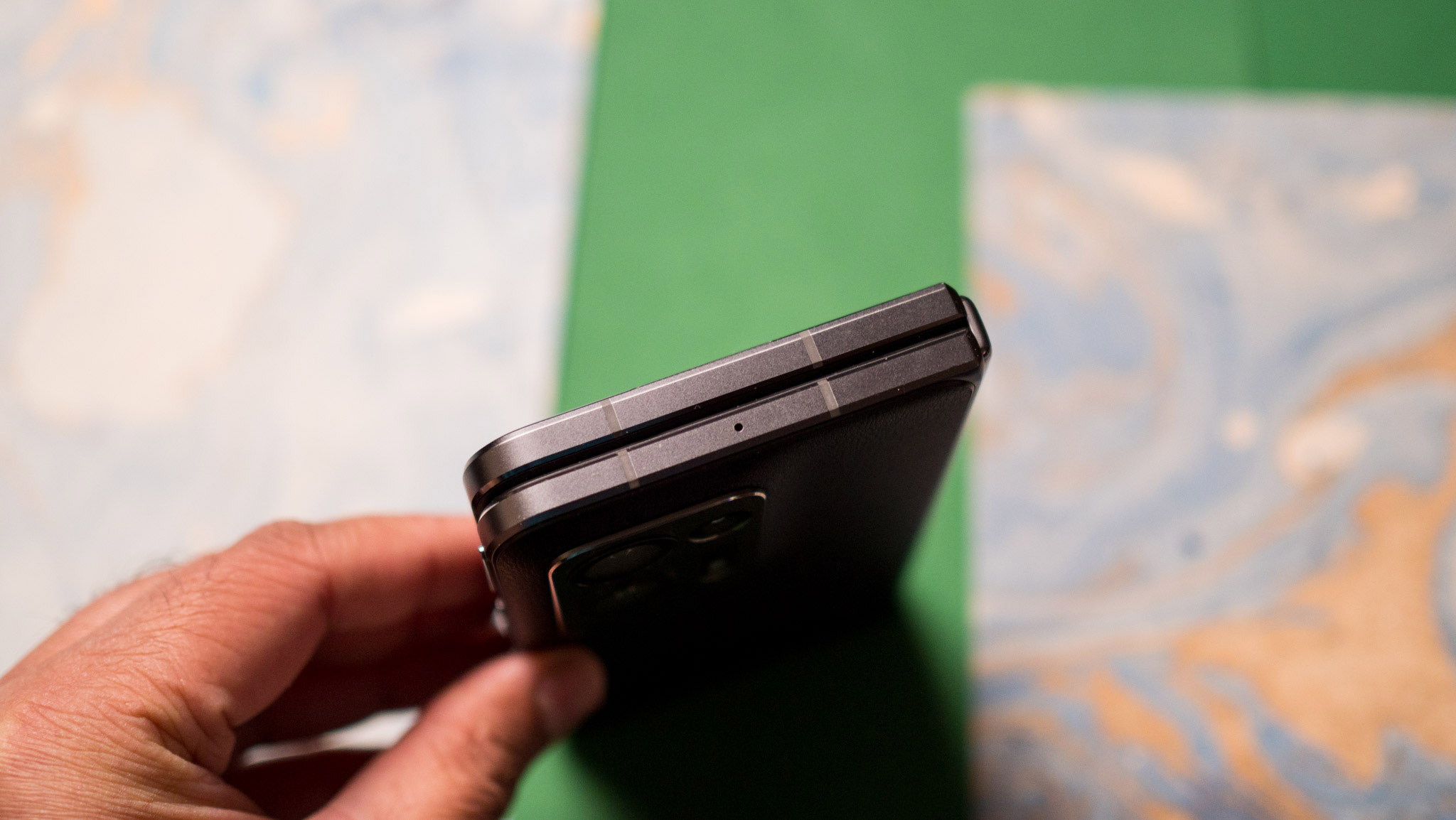
While the Find N2 is shorter, it is wider than the Galaxy Z Fold 4 by 5.5mm when folded, and that makes using the outer screen a little less congested. Overall, I really like the design choices and the size of both screens; the outer screen is great for messaging and emails, and the inner screen is ideal for playing games and streaming videos.
The foldable has flat sides, but there are beveled curves around the sides that make it easier to hold the foldable and unfurl the inner screen without any hassle. The anodized finish to the aluminum mid-frame also makes a difference here, and the Find N2 is available in three color choices: green and white variants with a glass back, and a black version that has a vegan leather back. The green model in particular look striking thanks to the matching color around the mid-frame, and it is heavier by 4g over the leather model due to the glass back.

The design around the camera island is similar to that of the Find X5 Pro; the rounded edges and the large rings for the modules add a lot of character, and the way the housing blends seamlessly into the back makes the find N2 look very upmarket. You get a side-mounted sensor for authentication, and it works unerringly.
Like its Chinese rivals, the hinge on the Find N2 closes fully flat, and it comes in at 14.6mm when folded. That's less than the Galaxy Z Fold 4, but the Mix Fold 2 still has the edge in this area — it's just 11.6mm when folded. The downside is that you don't get any ingress protection here — Samsung is still the only brand that offers IP68 rating for foldables.
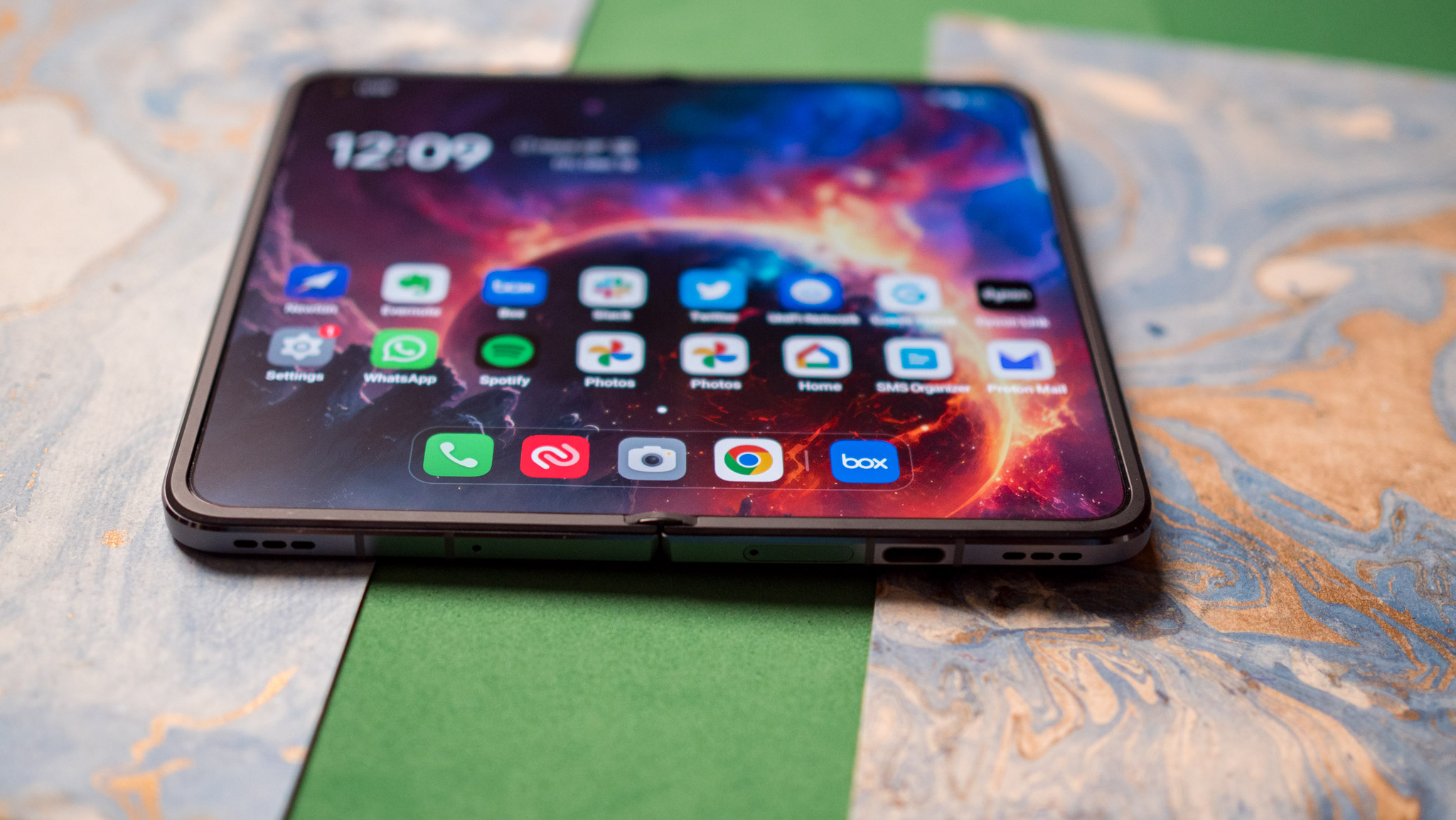
You'll find a lot of familiar features on the hardware side of things. The Find N2 is powered by the Snapdragon 8+ Gen 1, and the base version comes with 12GB of RAM and 256GB of storage. There's also a higher-end model with 16GB of RAM and 512GB of storage, but the base tier should be more than enough for most users. There's Bluetooth 5.3, Wi-Fi 6, NFC, global 5G Sub-6 bands, and a vibration motor that's just as detailed as the one on the Find X5 Pro.
There isn't anything missing here, and the Find N2 feels incredibly fluid in daily use. I didn't see any slowdowns, and while the phone is running a Chinese version of ColorOS, it isn't too different to the global version — other than the obvious omission of the Play Store.

In spite of a smaller size, the Find N2 has a 4520mAh battery, larger than the 4400mAh unit you'll find on the Galaxy Z Fold 4. You also get faster charging tech here, with the phone going up to 67W over the SuperVOOC protocol. A full charge takes just 45 minutes, and you get to the halfway point in just 18 minutes.

OPPO is doing interesting things on the camera front, and the Find N2 has a lot to offer. It has a 50MP f/1.8 Sony IMX 890 primary lens with OIS, 48MP Sony IMX 581 wide-angle lens that doubles as a macro shooter, and a 32MP Sony IMX 709 zoom lens with an RGBW module that goes up to 2x optical zoom.
Hasselblad integration is back, and it is unchanged from the Find X5 Pro. You get the unique leaf shutter sound and orange accents in the camera, and Hasselblad's pro mode with 10-bit RAW stills. You'll also find the MariSilicon X silicon that debuted in the Find X5 series here, and it unlocks 4K HDR videos and 4K night video.
What's interesting about the camera is the ability to shoot in a variety of angles with FlexForm mode. I have a lot of fun using the Flex Mode on Samsung's foldables, and it's just as enjoyable to do so here.

As for the software, the Find N2 runs ColorOS 13 based on Android 13 out of the box. I didn't get a confirmation when I asked OPPO about how many platform updates the Find N2 would get, but it should be in line with the three updates the brand guarantees for its high-end phones. The Chinese version of ColorOS isn't too different to the global skin, but it isn't optimized for the apps that I normally use, so I wasn't able to use full-screen mode when using the inner screen.

This will change if the Find N2 were to make its way outside China, and I think OPPO should consider doing just that. The brand has established itself in global markets, and the Find N2 is the perfect product to showcase OPPO's burgeoning status as a leading Android manufacturer.
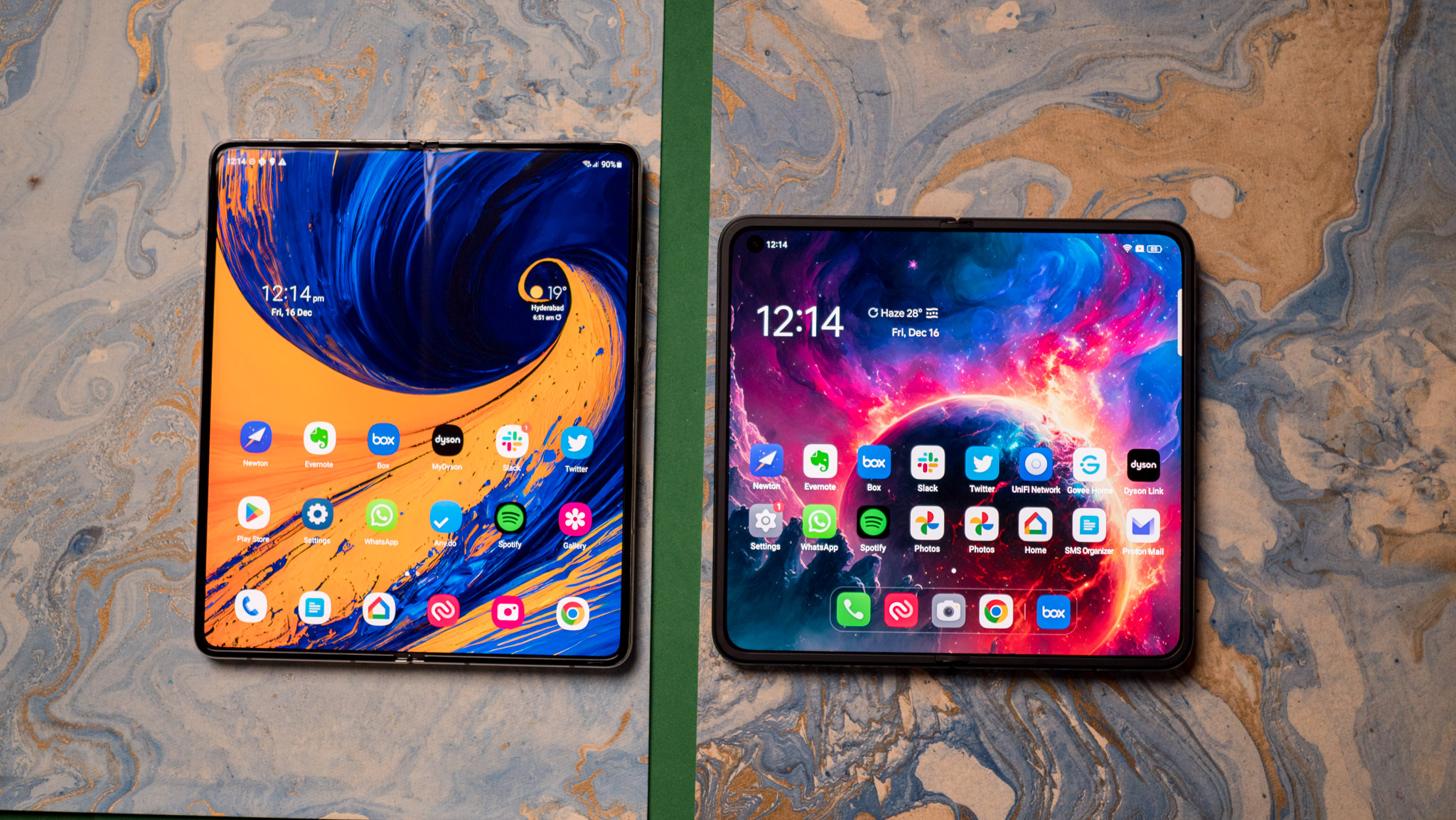
There's another factor to consider. Samsung is able to charge $1,799 for the Galaxy Z Fold 4 because it has first-mover advantage, and there aren't real alternatives to the foldable. That narrative would change if Chinese brands started selling their products globally. The Find N2 retails for RMB 7,999 ($1,147) for the 12GB/256GB model and RMB 8,999 ($1,270) for the 16GB/512GB edition, and that's considerably lower than what Samsung charges for its foldables.

Usually, there's a 10 to 15% increase in pricing when these devices make their way to global markets, and even accounting for that, the Find N2 would be a standout value. That's why I'm excited that the Find N2 Flip is launching worldwide in Q1 2023; that phone starts off at just RMB 5,999 ($860) in China, and it should see a decent amount of attention.

As for the Find N2, it has been a thoroughly enjoyable product to use. The smaller size along with the lightweight design gives it a distinct edge against other horizontally-folding phones, and OPPO nailed the hinge mechanism and the design. There isn't much to fault here, and OPPO is in a position to challenge Samsung's dominance if it were to launch the Find N2 globally.
Even if it chooses not to, it's entirely likely that the OnePlus Fold will just be a rebranded version of this device, and that makes for a very exciting 2023.
Get the latest news from Android Central, your trusted companion in the world of Android

Harish Jonnalagadda is Android Central's Senior Editor overseeing mobile coverage. In his current role, he leads the site's coverage of Chinese phone brands, networking products, and AV gear. He has been testing phones for over a decade, and has extensive experience in mobile hardware and the global semiconductor industry. Contact him on Twitter at @chunkynerd.
